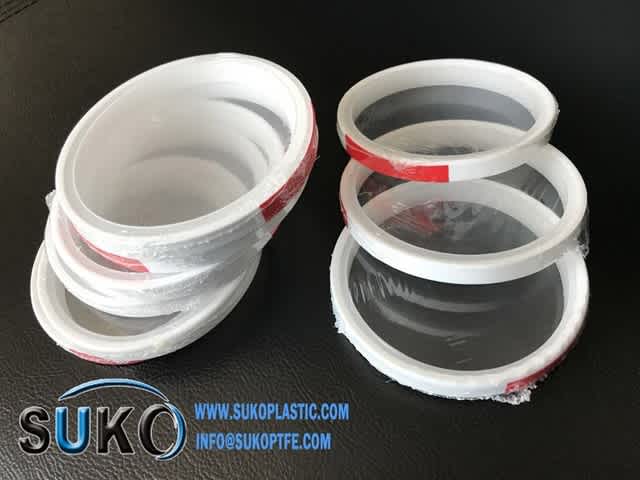At present, water pollution and water shortage have seriously threatened people's life safety. For a long time, the treatment of water pollution has been the focus of environmental protection. Membrane technology has been one of the mainstream treatment methods because of its green environmental protection, sustainability, rapid and efficient separation process and other advantages, and has achieved good results. PTFE microporous membrane material has been concerned and studied by international scholars for its excellent chemical resistance, high porosity and good mechanical properties. However, PTFE microporous membrane has the characteristics of low surface energy and high hydrophobicity, which greatly limits its application in the field of water treatment. Therefore, improving the hydrophilicity of PTFE microporous membrane has become an important research direction.
In this paper, polyvinyl alcohol (PVA) and chitosan or oxycarboxymethyl chitosan were used as hydrophilic agents. Different crosslinking agents were used to wrap a hydrogel hydrophilic coating on PTFE microporous membrane fiber through crosslinking reaction, so as to realize the hydrophilic modification of PTFE microporous membrane.
Specifically, the following two parts of the study were carried out:
(1) polyvinyl alcohol (PVA) with good hydrophilic property and chitosan (CS) with good antibacterial property were selected as materials to modify PTFE microporous membrane by combining hydrogel coating formed by epichlorohydrin crosslinking with SiO2 nanoparticles in situ under alkaline conditions.
The experimental results showed that the fiber surface of modified PTFE microporous film was coated with a layer of hydrogel, and the hydrogel coating attached a large number of solid particles to the node, which improved the surface roughness and reduced the average pore diameter and porosity slightly. Hydroxyl and amino groups appeared on the surface of modified film. New elements N,O,Si appeared on the surface of modified membrane. With the increase of PVA solution concentration, the water flux of the modified membrane first increases and then decreases, and the contact Angle of the membrane surface first decreases and then tends to be stable. With the increase of reaction time, the water flux of the modified membrane first increased and then decreased. With the increase of reaction temperature, the water flux of the modified membrane increases first and then decreases, and the contact Angle of the membrane surface decreases first and then increases. The optimal reaction conditions are :PVA solution concentration is 1wt%,CS solution concentration is 0.3wt%, the mass ratio of CS solution to PVA solution is 1:1. The reaction time is 6h, the reaction temperature is 40℃, the reaction pH is 12, and the water dilution ratio in the secondary treatment is 45 times (PBA:SiO2=1:2.5).
The contact Angle of hydrophilic modified PTFEmicroporous membrane decreased from 136° to 48°, and the pure water flux reached 3172L·m-2·h-1.The experimental results of oil in water emulsion separation of hydrophilic modified PTFE microporous membrane show that the hydrophilic modified PTFE microporous membrane has good anti-oil properties and oil retention rate of 97%.The physical and chemical stability of hydrophilic PTFE microporous membrane shows that the hydrophilic PTFE microporous membrane has good acid resistance and washing resistance.
(2) PTFE microporous membrane was modified with polyvinyl alcohol (PVA) and oxygen carboxymethyl chitosan (OCMCS) by crosslinking with glutaraldehyde under acidic conditions.
The results showed that the fiber surface of PTFE microporous membrane was covered with a hydrogel coating, and the surface of PTFE microporous membrane still retained the original three-dimensional network structure. Hydrophilic hydroxyl and amino groups appeared on the surface of PTFE microporous membrane. With the increase of PVA content in the reaction solution, the water flux of the modified membrane increases first and then decreases, and the contact Angle decreases first and then increases. With the increase of reaction temperature, the water flux of modified membrane increases first and then decreases, and the contact Angle decreases first and then increases. With the increase of reaction time, the water flux of modified membrane first increases and then decreases, and the contact Angle first decreases and then increases.
The optimal experimental conditions were as follows: mass ratio of OCMCS/PVA was 1:1, the amount of 5wt% glutaraldehyde and 1wt% hydrochloric acid solution was 2.5ml and 1mL, the reaction time was 6h, and the temperature was 50℃.The ptfe-pva /OCMCS membrane prepared has a larger water flux of 4480.89L·m-2·h-1 and a contact Angle of 57.48°.The anti-pollution test results of PTFE microporous membrane with hydrophilic modification showed that ptfe-pva /OCMCS membrane had good anti-bsa adsorption ability. The results of long time washing showed that ptfe-pva /OCMCS film had good physical stability.










